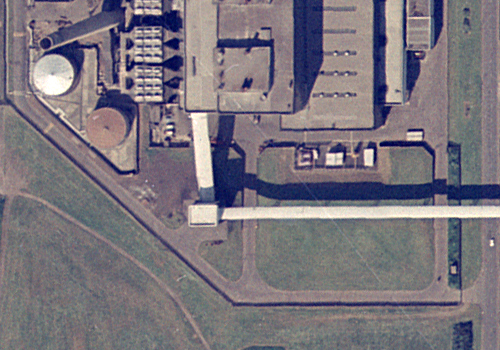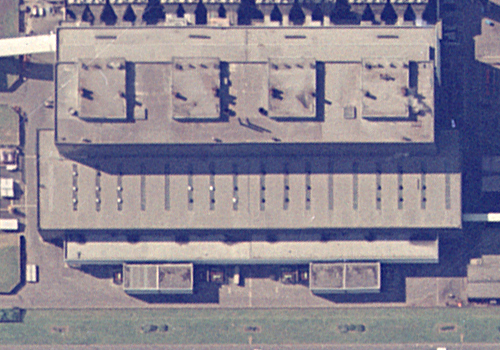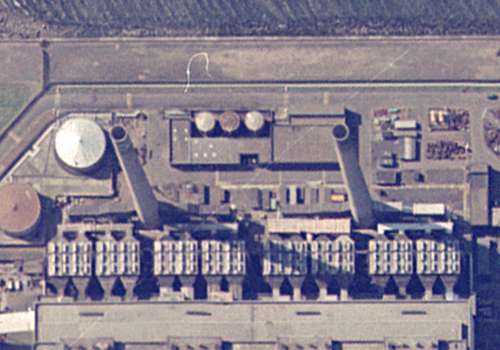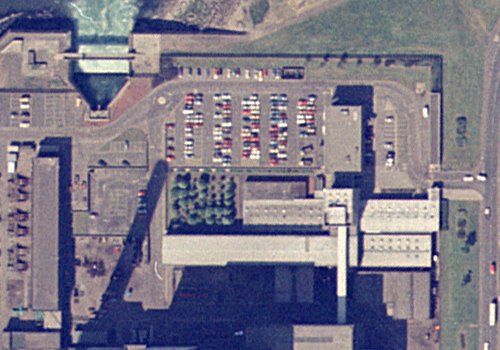Thermal Power Stations
The economic capability of a country is heavily dependent on its ability to generate and distribute electrical power. There are many ways to produce electricity, and aerial imagery can provide information on the type and capability of electricity power plants and transmission facilities.
This feature examines Cockenzie Power Station, East Lothian, to demonstrate the layout of a typical coal-fired thermal power station in the UK. It will be seen that thermal power stations are laid out in a logical fashion, illustrating the flow of materials and processes at the site.
|
1. FUEL STORAGE
In a thermal power station, coal or oil is burnt in a boiler to heat water to produce steam to turn the blades of a turbine which generates electricity.
Coal is normally brought to the power station by rail or ship, and is received at the coal handling plant. An extensive reserve stockpile is located near to the power station; in the UK there is a legal requirement to hold 4 months stock of fuel.
|
 |
|
2. COAL CONVEYOR
Coal is treated and crushed before being transported to the boiler house via a conveyor system, at which point it is pulverised into dust before being blown into the boilers.
Two cylindrical oil storage tanks visible at upper left hold a reserve source of fuel.
|
 |
|
3. BOILER HOUSE AND GENERATOR HALL
Steam is super-heated in the boiler to over 500 degrees Centigrade; this drives a turbine connected directly to a generator. The boiler house and generator hall are usually combined in one building.
The elevated roofs over four boilers can be seen in the upper portion of this image, with the generator hall adjacent.
|
 |
|
4. STACKS
Smoke produced in the burning of coal is passed through a series of electrostatic precipitators (EP's), which filter ash from the flue gas before it is vented into the atmosphere through the stacks.
In this image, it can be seen that two EP's serve each of the four boilers.
|
 |
|
5. TRANSFORMER YARD
Electricity produced by the generators is then passed through a 'step-up' transformer to convert it to higher voltages for onward transmission to the National Grid. The transformer yard and switchgear are normally located in the open, in front of the generator hall. Transmission pylons are usually present, to distribute electrical power away from the station, although this can also be achieved by underground cables.
|
 |
|
6 ADMINISTRATION
The power station control and administration facilities are located adjacent to the turbine hall. Staff car-parking is located within the perimeter fence.
The outlet for cooling water is visible at upper left. At this particular plant, sea water is pumped into the power station to cool the steam condensers, before being flushed back into the sea. At inland sites, cooling towers are used for this purpose.
|
 |
Cockenzie Power Station began generating electricity in 1968 and ceased operating in 2013. When first opened, it was the UK's largest coal-fired power station but ended its life as the UK's least carbon-efficient. It has now been demolished.


